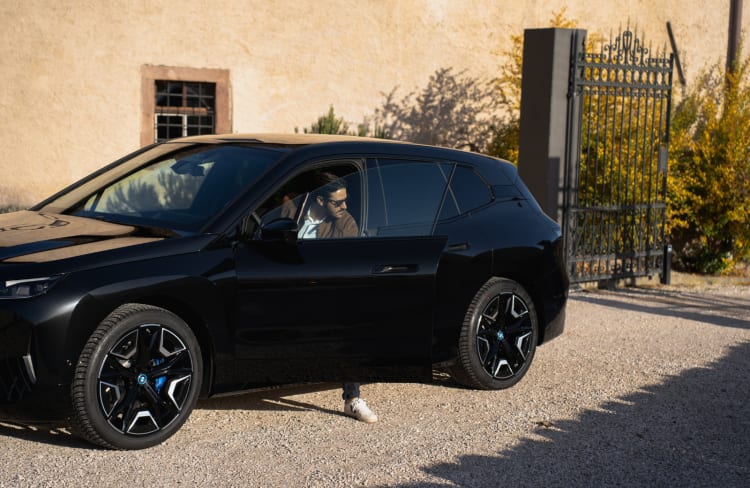Leased Car Accident: What Happens If You’re In One?
As the driver of a leased vehicle, you are responsible for more than just your monthly payments. Here’s what you need to know about leased car accidents, and how to handle the situation when a crash occurs.
Read time
5 minutes
Date
08.31.2023
Share
For many, driving is about practicality and freedom; you need to get to work and the grocery store, but you also enjoy being able to drive to the movies or even take off on an adventurous road trip. Unfortunately, a car accident can disrupt all of that, and if you’re driving a leased vehicle, you may also have questions about what to do and what you are liable for.
With this in mind, some drivers may be looking for an alternative to vehicle leasing, and that’s where a car subscription service could be a better fit for many. With a FINN car subscription, drivers have peace of mind knowing that an insurance policy and maintenance is included in their monthly price. And with FINN also delivering the new vehicle to your door, you’re free to focus on where you’re headed to next.
Lease your next car with FINN
What to do after a leased car accident
When a vehicle accident occurs, it’s normal to not immediately know what to do. But by remembering a few key points, you can respond to the situation effectively and responsibly. Please note, this is not legal advice. You should always seek a car accident attorney, law firm, or proper guidance after being involved in a car incident.
Check for injuries
In the first moments after an auto accident, it’s important to check for injuries to yourself, your passengers, and any other motorist or individual involved. And should anyone be in need of immediate medical attention, call for help. The sooner a bodily injury is attended to the better.
Find a safe spot for your car
If your vehicle is moving in the immediate moments after an accident, you should stop in the first available safe spot and away from the accident scene. This might be by the side of the road or the shoulder on a highway. By moving your car out of traffic, you are reducing further risk to yourself and other road users.
Get your information in order
When you’re involved in a vehicle accident that involves another driver, it is important that you exchange details with them, no matter who might have been at fault. This includes giving them your contact information - your name and address - as well as your registration and driver’s insurance company information. The other driver should also provide you with their car insurance information and the same particulars, thereby ensuring you both have what you need to resolve any collision damage or personal injury claims at a later date.
Report the incident
Broadly speaking, most law enforcement agencies in the U.S. do not require you to submit a police report for a minor fender bender, unless an individual has been hurt or there is substantial damage. Nonetheless, it is always advisable that you check regulations for your region, particularly as reporting all relevant information may be crucial for any further legal or insurance coverage purposes.
As an insured driver, you do have a responsibility to inform your insurance provider after an accident. They will want to know the time, date, and location of the incident, as well as any additional details such as weather, road conditions, and even visibility. Your insurer may also ask you details about the other vehicle, including the make and model of the car.
You will also need to inform the dealership as soon as possible. Your lease agreement may contain certain terms that are activated in the event of an accident, so communicating with the lease operator means you can work with them to resolve any issues that need to be addressed.
In the event of an accident, what are the differences between car leases and owned vehicles?
If you experience an accident in a car that you own, it is up to you to decide what repairs to make to the vehicle damage and when. For example, you would replace a broken headlight so the car is roadworthy, but you might choose not to fix a dent in the bodywork because it is only a cosmetic imperfection. As a vehicle owner, you also have the freedom to decide who fixes your car.
With a leased vehicle, the title for the car remains with the leasing company. This means they will often set out the terms of any vehicle repairs, which can include details of approved repair centers or body shops. The cost of fixing a damaged leased vehicle typically falls to the driver.
For drivers who would prefer to simplify their lease contract, a FINN car subscription offers a single monthly price, which covers all you need, including maintenance and auto insurance costs, to keep you on the road.
How to get your leased car repaired
If you experience a leased car accident, your dealership will likely provide you with the details of what is required to fix the car to their specific standards. It is therefore important that you communicate with the lease company so that you have all the correct information.
Who pays for repairs on a leased car?
Non-warranty fixes to a leased vehicle are generally the responsibility of the leaseholder. This includes everything from minor cosmetic damage to extensive repairs after you’ve found yourself in a leased vehicle accident. Drivers may find they are also subject to excess wear and tear fees at the end of their lease term.
How much do lease companies charge for scratches?
Lease operators typically allow $500 to $1,000 for acceptable vehicle wear and tear. But if the damage to the car is more than that, they may charge you more than $1,000 so that the vehicle can be fixed and resold.
With terms of six to 12 months, FINN’s all-in-one subscription may be a better option for those who don’t wish to or are looking for an alternative to leasing their vehicle.
What happens if you total your leased car?
If you total a leased car - that is, you damage the vehicle so badly that it is no longer roadworthy - you will be responsible for paying the leasing company the fair market value of the car. And, unless you have gap insurance, you will also be responsible for the remaining lease payments.
How does gap insurance help with a leased car accident?
Gap insurance for a leased car helps to insulate you financially should your vehicle be stolen or totaled. Essentially, a gap policy covers the difference between what you owe on your lease payments and the market value of the car at the time of the incident. Without the gap coverage, you could be subject to a large bill if your vehicle is lost or damaged beyond repair.
Who gets the insurance check when a leased car is totaled?
Leased vehicles remain the property of the dealership throughout the term of a lease. This means if a leased car is totaled, it is the leasing company that receives the insurance check from the insurance company, rather than the vehicle driver.
In a situation where a driver or passenger experiences a bodily injury, that party will receive any insurance payouts. It’s important to note that if, as a driver, your policy does not include personal insurance coverage, you may be held responsible for medical bills associated with the accident.
How to lease your next car
If you have decided you are ready to lease your next car, there are few things you can do to make the process as straightforward as possible.
1. Research
The first place to begin when leasing your car is to do some research. You’ll likely have a monthly budget in mind, and possibly even the model of car you would like to drive. But you will also need to consider your mileage, and even the preferred length of time for your lease term. All of these factors will feed into your monthly lease payments.
2. Compare offers
Once you have decided on the kind of vehicle you want, your likely mileage, and how long you want to lease your car, it’s time to speak to dealerships. It’s wise to get quotes from multiple dealerships so you can decide what is best for you.
3. Inspect the car
You should inspect the vehicle thoroughly before you drive it away from the dealership. Remember, once the car is in your possession you will be responsible for any damage, and so it is important to highlight any nicks, dents, or scratches - both inside and outside - while it’s still on the lot.
4. Read the lease terms before you sign
Before you commit to a lease agreement, be sure that you understand the particulars of the arrangement. This means ensuring you know what you are responsible for - including what happens if you crash the car. And if anything in the paperwork is unclear, you should ask the dealership to explain it, thereby ensuring you are confident in what you are signing.
5. Consider a FINN car subscription
A FINN subscription can be a great alternative to a vehicle lease, particularly if you are considering a shorter term or want to bundle your car payments, insurance, and maintenance into a single fee. And with a great selection of vehicles available, choosing your next car couldn’t be simpler.

Final thoughts
Leasing a car can be a great way for drivers to get on the road without having to pay the upfront costs of buying a vehicle. But when an accident case occurs, the driver still has the responsibility of repairing the vehicle to the dealership’s requirements. And should the car need to go to a repair shop or be damaged beyond repair, the driver may have to pay the leasing company the market value of the vehicle, as well as any remaining monthly lease payments.
With FINN’s subscription service, drivers have the confidence of knowing both insurance and maintenance are included in their monthly payments. And with subscription terms of just six to 12 months, you can swap to a new car when you ready for a change.
You might also like

What Is the Residual Value on a Car Lease?
The residual value of a car is its estimated worth at the end of a lease. It affects more than the purchase price of the car at the lease end. Find out more…

Should You Lease and Then Buy a Car?
The short answer is yes, but only if you can get a great deal on the lease and the payoff amount. Here are the steps to determine the profitability and if it makes more sense to buy the car rather than lease.

How to Get a High Mileage Lease: Everything You Need to Know
Looking to get the most out of your car lease? Check out these tips on how to secure a high mileage lease that will save you money and increase flexibility.








